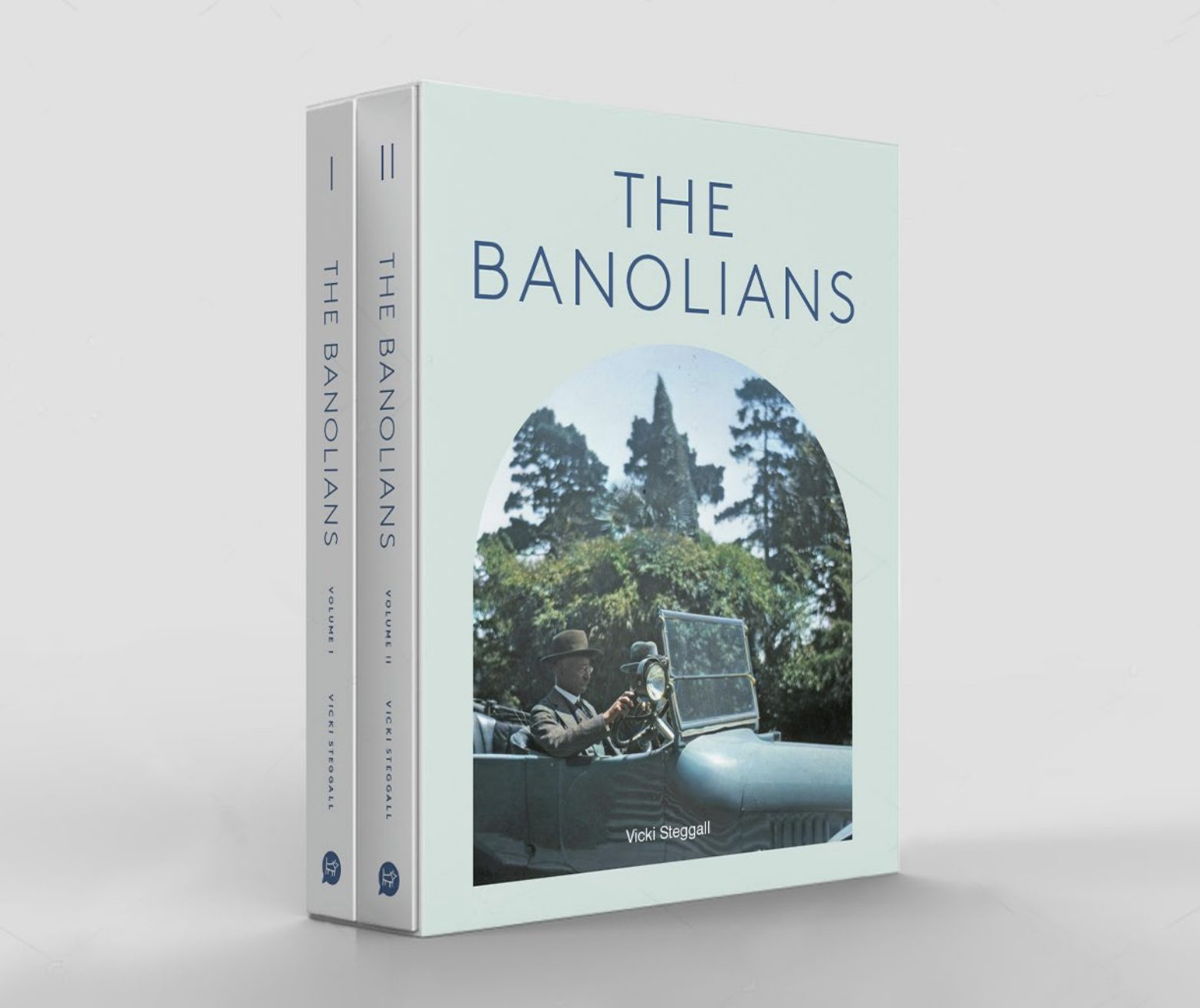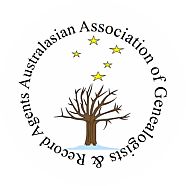Photo: “The Banolians”, by Vicki Steggall – (https://www.vickisteggall.com.au/book/the-banolians/)
By Anita Payne
In May 2019, I made a decision to leave the job that I’d had for the previous 15 months, to care for my aging mother. I’d resigned, but I didn’t have another job to go to, so my full-time job would be caring for Mum. I had no idea what else I was going to do.
She has since passed, but had found my genealogy work interesting, as she had tried doing a family tree in the old days – long before we got the internet!
I had even less idea what fun the next 4 years would bring.
I had always loved genealogy, even to the extent of registering a Business Name, Ancestry Victoria, in 2005. I enjoyed finding family information for my own family and for other people looking for their heritage.
As the saying goes, when one door closes, another door opens.
By the end of 2017, I had graduated with my Diploma of Family History from the University of Tasmania. It was a brilliant course that I did all online, and I learned much that I would not have discovered otherwise. I loved every minute of it.
It was at my graduation dinner in Hobart (December 2017) that I learnt of AAGRA (The Australasian Association of Genealogists and Record Agents). I was asked by the organiser of the dinner if I was going to join AAGRA. I had to admit I didn’t know about it.
I was then pointed to the AAGRA president Dr Dianne Snowden AM, who was sitting right beside me. Naturally I sent in my application in early January 2018. My thoughts turned to doing this as a part-time business.
AAGRA often received family tree research requests that the public had sent in. On the second of May 2019 there was an email circulated from the AAGRA secretary regarding a requesting for the assistance of one or two archivists.
I did not see myself as an expert archivist, but happily described myself as a record agent. However, as I was quite curious, I replied to the person requesting assistance, and that was Vicki Steggall.
We had a chat on the phone that same day and met face to face 10 days later. I guess it was an interview over a cup of coffee. This was the beginning of the amazing journey about the Yencken family memoirs.
Vicki is a historian and writer and had been commissioned to write the history of this wonderful family. Starting from their known origins, their arrival in Australia, then the businesses they built up over the years, and the properties they accumulated. This would span from the mid-1800s through to the 1920s and a little beyond.
The very first research task that I was given was to transcribe an exercise book (later noted to be written in 1846), handwritten in beautiful script, but with an unknown author. As I transcribed this book, it became evident from the information that was contained within those notes that some research could be worth doing. The gentleman had purchased land and later sold some cattle at the local market.
He had written in the exercise book the details of the sale of the animals. Using this information, I decided to search through the newspapers on TROVE. Knowing roughly what date he went to market and some detail of the town I found it to be Benalla.
Then I was able to ascertain who the author of this exercise book was. Vicki Steggall and Simon Yencken were pleased, as none of the family had been able to identify him.
It just shows that research comes in different forms. Many different resources were used to find answers during the journey of the Yencken Project. There were lots of questions where answers were not expected.
Much of my work was done online, and mostly it is work that can be done from home, thanks to the internet.
Vicki would often send me an email with the comment “Put on your detective hat. We have something to find.” I must one day buy myself a Sherlock Holmes hat, but I don’t think I’ll worry about the pipe though. My husband insists that my creativity lets me find things others would usually miss. Every fact needed to be checked and confirmed, wherever that can be achieved.
In the beginning of this project, there were several other people working on the project as well as myself. But with covid’s arrival things started to change and by the end of about 2020 I was the only researcher/archivist still working on the project.
I scanned and transcribed many, many books and documents and letters. I had the opportunity to go with Vicki to family members’ homes to look through their bookshelves and their cupboards. We kept finding an amazing quantity of bits and pieces that had been kept by the family over many, many years.
One of the younger members of the family back in the 1871, as a 17yr old lad, had written his own logbook of his journey out to Australia on the ship the Hampshire. The fortunate part was that he had also written within his journal where the ship was located, by copying down the map coordinates from the ship’s records every day.
This allowed for me to be able to enter those coordinates into a programme and plot the entire journey of the ship from leaving England to its arrival in Australia. That map amazed the family.
I was very fortunate to be able to meet with lovely family members at a family gathering in Melbourne, held to give family members an update of the progress of the book. I was pointed out as the source of much of the prized new records.
Due to lots of different findings and lots of questions being asked and answered the final editing and printing of the book was delayed again and again.
In March 2022 a member of the family in England said that she had tubs and tubs of the old family wills, probates and even settlement documents. It had been suggested that these documents should be scanned so that they could be reviewed, and information extracted from them. But the holder of these documents made it very clear that the documents were not leaving her home.
I made a suggestion out of the blue that I would be happy to jump on a plane, come over there and scan all those documents, not imagining it might actually happen.
Anne, who held those documents, said that would be great and they would be happy to have me. The only thing needed was to do organise myself to have someone pay for the airfare. A bit too much to ask, I thought.
I went to bed and the next morning I had an email from Simon Yencken that said he would pay the airfare. You can just imagine my excitement and shock. I was overwhelmed to think I was able to go to England and to scan all of these relevant documents to go into the book or for the research for the book.
I headed off to England at the end of March, staying just over two weeks. During that time, I worked some rather long hours, scanning and cataloguing all of the relevant documents required for the book.
I had the opportunity to meet with some of the other family members who also had documents and books and old Bibles and photos relating to the family.
My hosts, Anne and Nick, were the best people I could have wished to stay with. I was called for breakfast, lunch and supper every day, always with a beautiful meal set down in front of me. Their hospitality was wonderful, and I couldn’t thank them enough.
During the time there I scanned over 4000 pages of documents. Some of them dated back to the late 1700s and measured 4 feet by 4 feet in the old imperial scale.
They were on real parchment paper, which meant having been folded for a long period of time they were very difficult to unfold and to hold open so that they could be scanned. I used any weights that I could find to hold the corners and the edges to be able to photograph every single document.
A scanner was not something that I was able to take with me or have available to me at the other end. I used my phone and the app called Photomyne. It is a wonderful program, and I wouldn’t be without it these days.
I believe Vicki had been expected to write a single book, however it turned into an impressive two-book set, named “The Banolians”.
The written story was supplemented by many amazing photos that had been collected and found throughout the family, and including lots of data and pictures I found, mostly never known about by any family members, to their pleasant surprise.
The book was finally printed and published in mid-2023, somewhat later than expected from its original commencement in late 2018. It is a true testament to Simon Yencken and the Yencken families for their patience and substantial financial contribution in having this book-set written, printed and published.
It is a magnificent result from Vicki’s work and all of the documents, letters and trinkets that the family had kept through their time from their first arrival in Australia. The finished work now on display in the National Library of Australia and two prominent organisations in Victoria. “The Banolians” can be purchased at a number of good book outlets. I feel very honoured and privileged to have been a part of this journey.
However, it wouldn’t have happened if I had not been a member of AAGRA and had not answered the original email that Vicki had sent back in early May 2019.
There is much more that I could talk about in the exploration and research that was done throughout this project, but I don’t want to bore everybody.
I have been a part-time researcher / record agent for the last five years now, having been asked by Vicki to be her sleuth for her next project, and I continue to receive other good enquiries, and now I can pick which clients I want to work for.
So, if you’re thinking about joining AAGRA, if you’ve got an ability to research, have done some study, enjoy hunting for answers from little clues, and love what you do (like I do), then get in contact with AAGRA. They always like to welcome new members.
As the saying goes, when you do what you love, you never work a day in your life.

